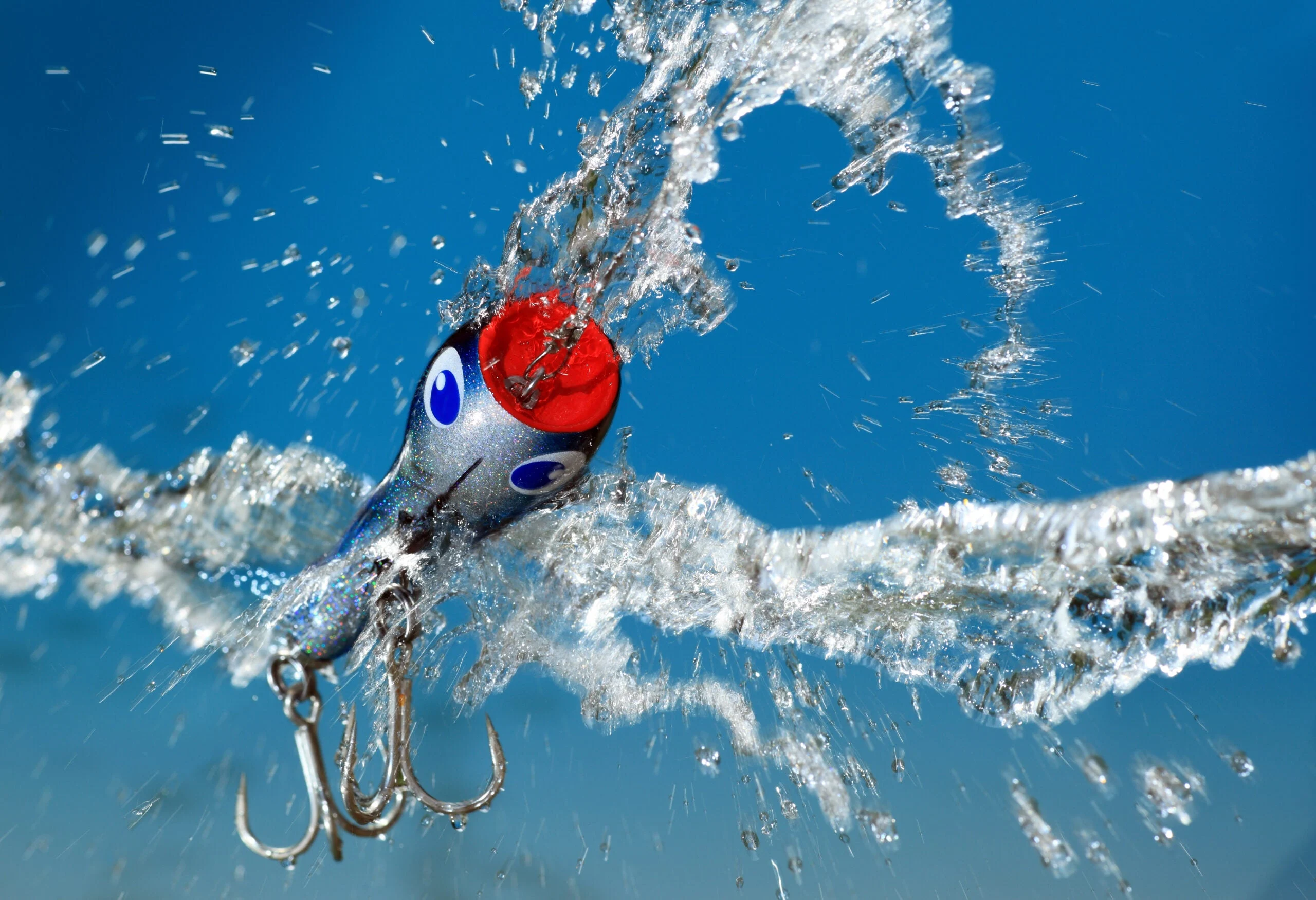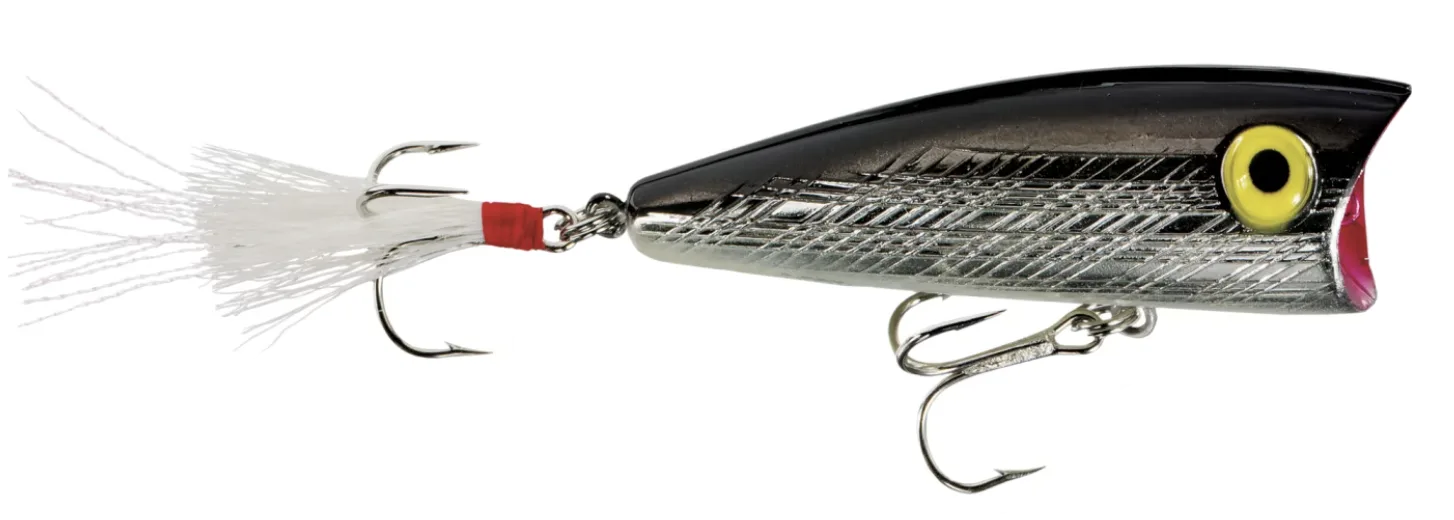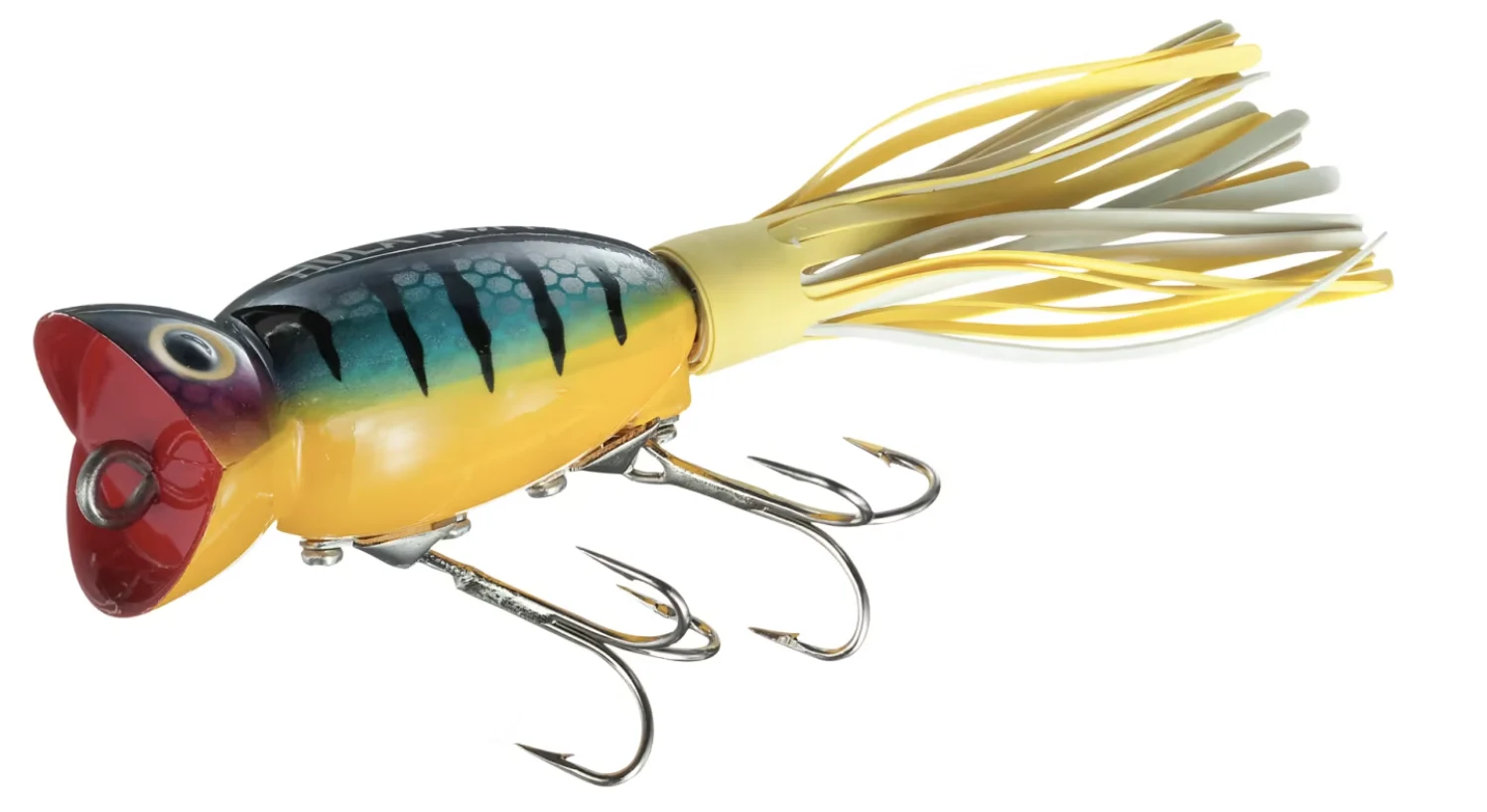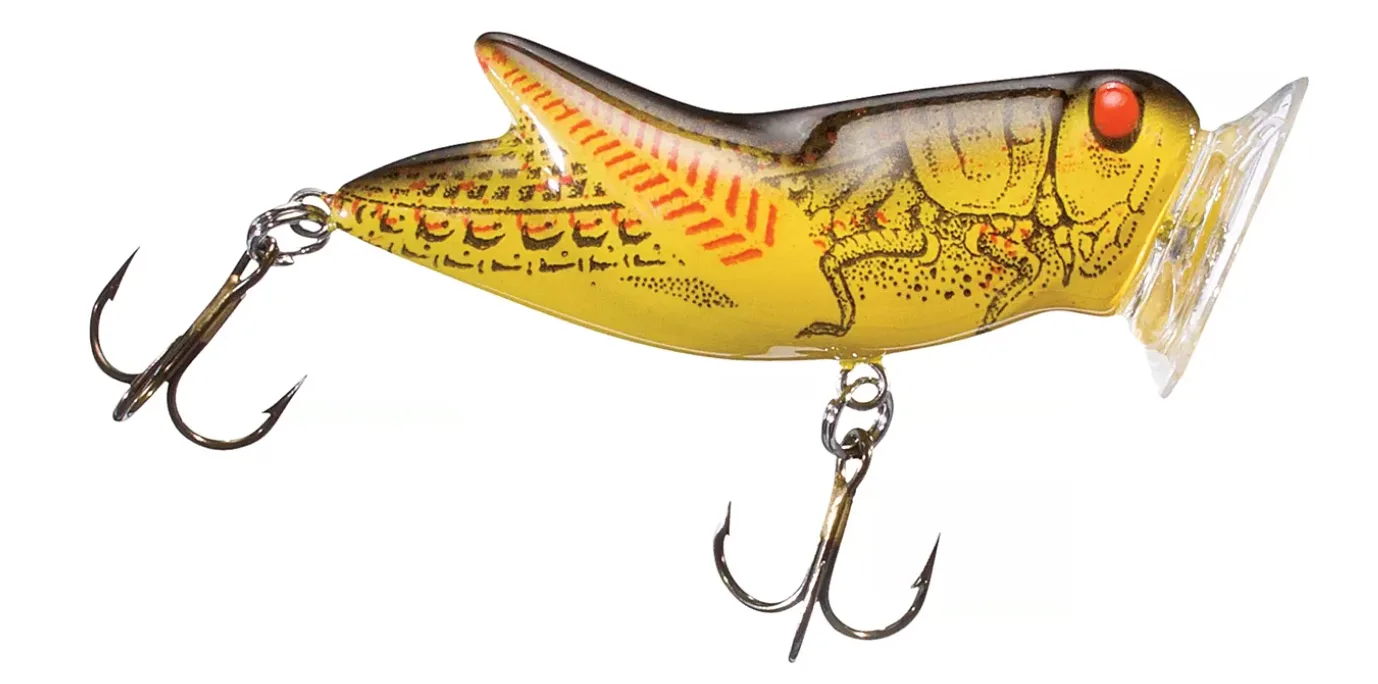_We may earn revenue from the products available on this page and participate in affiliate programs. Learn more ›
_
If you don’t know how to fish with poppers and get the most from these lures, now’s the perfect time to learn, as the topwater
bite is in full swing and will stay good through summer and into fall. And, of course, topwater bites are what we all really want, right? I don’t think there are many anglers who wouldn’t agree a surface hit is the most thrilling thing in fishing, and working a popper in just the right way will definitely result in more of those explosive bites.
Regardless of whether you’re at the local lake or standing on the beach facing down an ocean, when a fish erupts on a lure working across the top, it’s magical. These days there are countless topwater lures available, some of which have unique designs that give them unique actions, but I’d argue there is no simpler, more elegant, or more timeless design than that of a classic popper.
It’s rare that I don’t have some poppers on hand, and it makes no difference what I’m targeting. The beauty of fishing poppers is that they’ll catch just about any gamefish that will feed on the surface in freshwater or salt. As for how to fish with poppers, it couldn’t be easier, as far as the basics go; all you have to do is cast out and reel back, imparting twitches of the rod tip to make that popper pop. But to get the most out of these lures, it’s valuable to understand how slight differences in their design alter their action and effectiveness. This will help you choose the perfect popper for the task at hand, and if you still aren’t sure which one is best for your local water, I’ve provided a run-down of my five favorites, which have accounted for a pile of epic surface takes all over the country. So, here’s how to fish with poppers to get in on that topwater bite.
First, What is a Popper and How Does It Work?

The concave mouth of a popper shoots water forward and to the sides, creating a fish-attracting commotion. A_nik / Adobe Stock
Poppers come in a huge variety of shapes and sizes. Some models are big and strong enough entice offshore giants like tuna and handle the ensuing battle. Others are light and tiny enough to be cast on a fly rod for bluegills. Although the shapes and profiles of the bodies and tails vary greatly, all poppers have one thing in common—a concave, scooped mouth. It’s this feature that makes a popper a popper. Some scooped mouths are shallow while others are deep, and it’s important to understand how the depth of a popper’s mouth changes its performance.
Poppers either float on the surface in a perfectly horizontal position or at a slight tail-down, diagonal position. The latter is actually more common, and some poppers even feature a bit of weight at the rear to achieve an orientation where the entire head is out of the water at rest. When you twitch the rod tip, the line pulls the head down, and as the lure advances forward, that scooped mouth traps water and forces it out ahead of the lure or out to the sides away from the lure. It’s the commotion created by the sound of the “pop” and the subsequent splash of the water being thrown by the lure’s head that draws the attention of fish and fools them into believing there’s an injured baitfish struggling on the surface. The depth of the mouth, however, determines how much water a popper will throw, and how much noise it will make. The thing is, louder and splashier is not always better.
**Related: The 25 Best Topwater Bass Lures
**
When and How to Fish with Poppers
In vast, open bodies of water like large lakes or the ocean, the more commotion a popper makes, the more likely it is to draw in fish from a distance. With that in mind, poppers are great in scenarios where there’s no obvious feeding activity taking place or obvious structure to target. A popper with a deep mouth can draw strikes out of nowhere when worked aggressively. Conversely, there are times when an aggressive popper can actually scare fish away. In super-clear water where fish are on guard, for example, a popper with a shallower mouth is often a better option, and you might want to work it with soft twitches, making it gurgle and wiggle very slightly instead of chugging loudly. Choosing the right popper and learning exactly how to fish a popper—when to pop hard or pop gently—depending on the the conditions, what you’re trying to imitate, and how aggressive the fish are can make a huge difference in your success with these lures.
**Related: The Best Summer Bass Lures—Picked by Pros
**
5 Classic Poppers That Really Produce
Almost every company that produces hard-plastic or wooden lures offers a popper these days and given that the design of a popper has remained relatively unchanged for decades, it’s difficult to make the argument that one popper is truly better than another. What I can offer, however, is a short list of my favorites—the poppers that are always in my boxes for different tasks. You may find other brands that suit your needs or specific scenarios on your home water better, but these five poppers never fail me.
1. Rebel Pop-R

Bass Pro Shops
The Rebel Pop-R
is a classic, and if you were to pick a lure to serve as a generic popper model on Wikipedia, this would be it. It features a deeply scooped mouth and a tail dressed with white synthetic hair. A Pop-R will throw a ton of water if you need it to, but because it’s light, you can also finesse it to produce a softer gurgle. The dressing also mimics a bug just below the surface, and I’ve had smallmouth come up and simply take it under while it was sitting still.
2. Arbogast Hula Popper

Bass Pro Shops
Best For: Bass
Another classic that’s been around since the 1950s, the, Hula Popper
does a terrific job of mimicking everything but a baitfish. In larger sizes, it’s a terrific frog imitation, as the rubber skirt looks like a frog’s legs and the shallow mouth produces a softer chug that closely resembles the push of a swimming frog. In the smallest size, this lure is a killer bug imitation, representing everything from cicadas to beetles and dragonflies.
3. Rebel CrickHopper Popper

Bass Pro Shops
Best For: Panfish, Trout
Measuring just 3 1/2 inches, this tiny CrickHopper Popper
is a stone cold killer on small streams and ponds. To maximize casting distance, accuracy, and action, it’s best fished on line no heavier than 4-pound-test. You can make this little cricket-shaped lure spit pretty far, but I’ve found that imparting subtle twitches and letting it float is the money. I’ve even had brown trout rise up to sip a CrickHopper Popper.
4. Yo-Zuri Hydro Popper

Bass Pro Shops
Best For: Striped Bass, Redfish, Snook, Large Pike
The deep scoop of the Hydro Popper’s
mouth makes it spit a mile and send out a gun-shot-like crack when you whip the rod hard and really make it chug. Most important, this lure is built tough as nails. Combine the rigid construction with heavy-duty hooks and hardware and you’ve got a popper capable of standing up to any large predator that takes a shot.
5. Nomad Design Chug Norris Popper

Bass Pro Shops
Best For: Striped Bass, Redfish, Tuna, King Mackerel
Looking to take a big saltwater predator on the surface? The Australian-made Chug Norris
can handle it. Not only does this lure cast a mile, but it also throws a ridiculous amount of water. As a bonus, holes drilled through the head also let some water pass through when you whip the rod tip, creating a frothy trail of bubbles for salty heavy hitters to follow.
**Read Next: Frog Fishing: 15 Ways to Catch More Bass on Topwater Frog Lures
**


